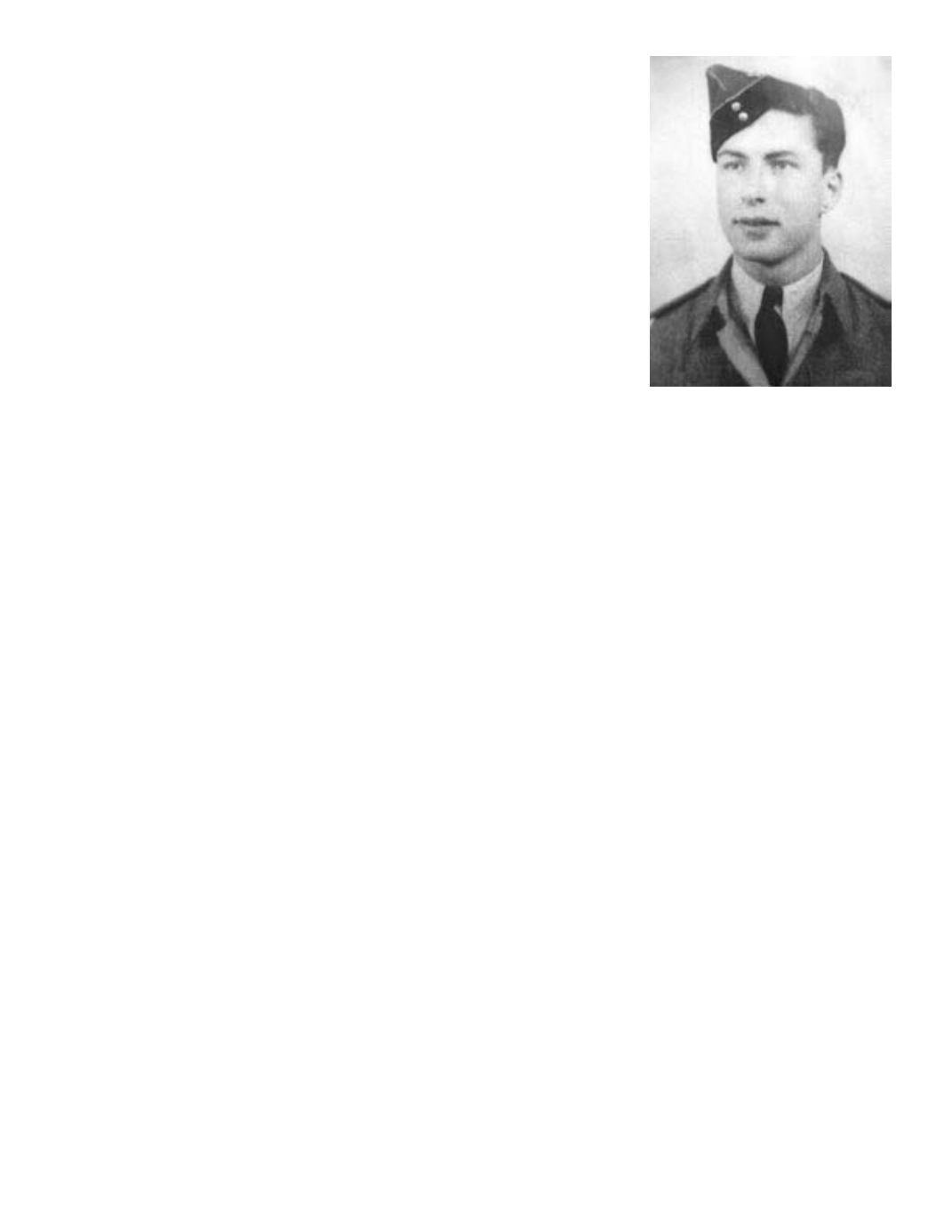
WorldWar II
FallenSoldiers - RockwoodCenotaph
Page 22
OperationBlockbuster
took place between 22February and 10March 1945 andwas part of the
larger Battle of theRhinelandwhichmarked the advanceof theAlliedArmies through the “Siegfried
Line” of defences and into theGerman homelandas far as theRhineRiver. OperationBlockbuster
involved some of the fiercest fighting of theWar.
“
TheBattleof theRhineland
was fought inFeb-Mar 1945betweenAllied forces fromCanada,
theUnitedKingdom, and theUnitedStates (aswell as smaller national contingents), and the
German forces occupying territory southandwest of theRhineRiver during theNorth-West Europe
campaign of theSecondWorldWar.”
“The initial goal was to reach theRhineRiver, the last significant natural barrier betweenAllied
forces andGermany. From their winter positions in theNijmegenSalient, theFirst CanadianArmy
reinforced by elements of theBritish 2ndArmy, beganoperations to advance south east, clearing
all landwest of the river. OperationVERITABLEwas a costly advance through flooded terrain and
Germandefensive lines, followedbyOperationBLOCKBUSTERwhich succeeded in driving through
(German lines) almost to the banks of theRhineRiver. OperationBLOCKBUSTER II cleared the
townof Xanten to end the fighting in theRhineland.” - canadiansoldiers.com
TwoVictoriaCrosseswere earned during these operations andCanadian losseswere high, but they
markedamajor turning point of theWar. Germany surrendered less than eight months later to end
theEuropean portionofWWII.
TheEssexandKent ScottishRegiment
returned toFrance on 5 July 1944 as part of the 4th
InfantryBrigade, 2ndCanadian InfantryDivision. Theymoved toNormandy in time to servewith the
British2ndArmy. They advanced along theChannel coast with theCanadian 1stArmy and helped
to liberateDieppe. The division saw heavy action in theNetherlands in late 1944 and took part in the
final offensives in 1945. TheEssexScottishRegiment was a part of: BourguebusRidge; St.André-
sur-Orne; Falaise; FalaiseRoad; Clair Tizon; Forêt de la Londe; TheScheldt;Woensdrecht; South
Beveland; TheRhineland; Goch-Calcar Road; TheHochwald; Xanten; TwenteCanal; Groningen;
Oldenburg; NorthWest Europe, 1942, 1944-1945. By the end of thewar inEurope, theEssex
ScottishRegiment had suffered thehighest losses of theCanadianArmywith over 2,000men
woundedandmore than 550 killed.
SeeErnest HenryGerrie’sbiography.
FallenSoldiers - RockwoodCenotaph
3
ERNESTHENRYGERRIE
B156042Gunner
Born:
30December 1923 i ErinTownship, Ontario
PreviousOccupations:
Farming andMachinist’sHelper
Enlisted:
1May 1943and volunteeredoverseas on 20November
1943 inNewfoundland
Died:
4April 1945 at the ageof 21
Buried:
CanadianMilitaryCemetery, Holten, Netherlands
Ernest HenryGerriewas born on 30December 1923 inErin
Township toDavidHenry andAnnieWinifred (neeSanderson)
Gerrie. Hewas the youngest son of their six children (Luella
b.1908, Evelyn, Edna, Hugh, andElwin). Sometime after his birth,
his familymoved toRockwood. After graduating fromGrade 8 at theage of 13 fromEramosa
S.S.#9 inRockwood, heworked as a farm labourer beforemoving toHamilton towork as a
Machinist’sHelper at theWestinghouse plant.
At the ageof 19, on 1May 1943, he enrolled in theArmy (ArtilleryCorps) under theNational
ResourceMobilizationAct (NRMA):
“Conscription, or compulsorymilitary service, divided the
nation in theSecondWorldWar and threatened the survival of political leaders. In 1939Prime
MinisterMackenzieKing, conscious of the opposition of French-speakingQuebec to conscription
in theFirstWorldWar, promised that therewould be no conscription for overseas service. By
mid-1940, however, therewas enormous pressure fromEnglishCanada for total mobilization of
manpower. King introduced theNational ResourcesMobilizationAct (NRMA), which called for a
national registration of eligiblemen andauthorized conscription for home defence. FromApril 1941,
the youngmen called upwere required to serve for the rest of thewar on home defence duties.” -
CanadianWarMuseum article - Democracy atWar / CanadianNewspapers and theSecondWorld
War / CanadaandWorldWar 2 / Politics andGovernment / Conscription
He enlisted into the 26thAnti-Aircraft Battery inNewfoundland from 20November 1943 through
May 1944whenhe volunteered for overseas service. ByOctober 1944, he had qualified as a
radar operator at BarriefieldCamp, near Kingston, Ontario (now known asCFBKingston). On 25
November, heembarked fromCanadaby ship and arrived inEngland 5 days later, where hewas
transferred into theCanadian InfantryCorps as amember of theEssex andKent ScottishRegiment
with the rank of Gunner. After completing a sixweek training course, hewas flown directly to the
BelgianFront where he joined the sameCanadianDivisionwhere his brother Hughwas serving in
theProvost Corps.
Gunner Ernest HenryGerriewas killed in action on 4April 1945, at the beginningof theBattle of
Zutphen andDeventer, inNorth-East Netherlands. Hewas initially buried near Zutphen. Shortly
after the end of theWar inEurope, his bodywas exhumed and reburied in theCanadianMilitary
Cemetery, Holten, Netherlands. His name is alsomemorialized in theBooks of Remembrance in the
PeaceTower of theCanadianParliament Buildings, Ottawa.


